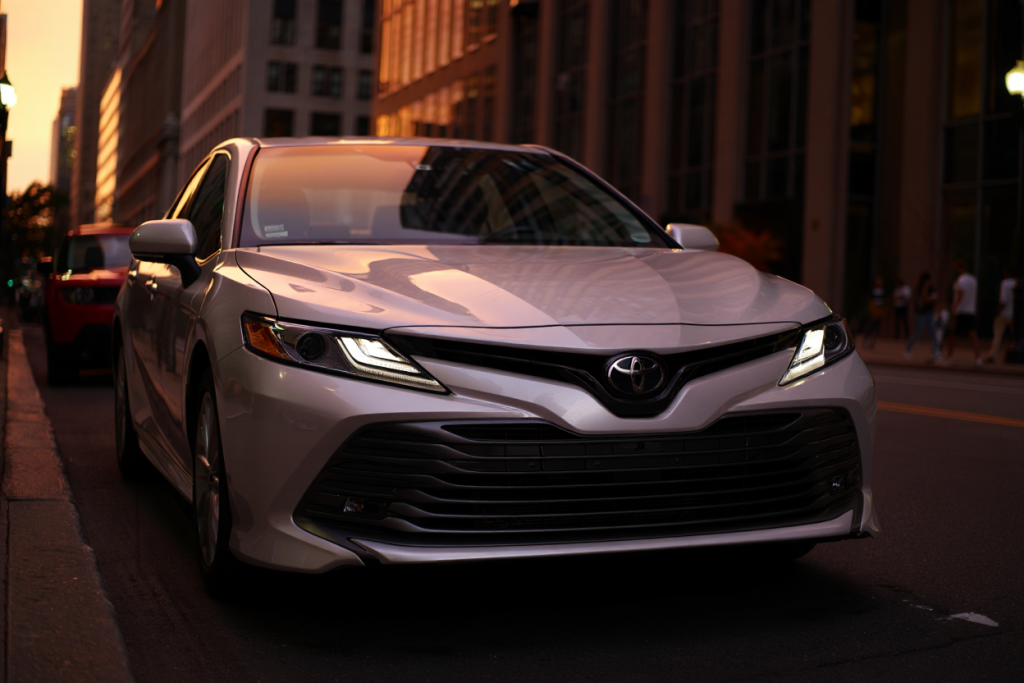Few situations are more frustrating than turning the key and hearing nothing. A car that won’t start can leave you stranded, but before calling a mechanic, many common issues can be checked quickly and safely.
This guide breaks down 7 potential causes of a no-start situation and provides practical troubleshooting steps, helping you save time, money, and stress. Whether it’s the battery, starter, ignition, or fuel system, knowing what to look for can prevent unnecessary towing or repair costs.
Check the Battery
A dead or weak battery is the most common reason a car won’t start. It’s often the simplest problem to diagnose and fix.
Signs of a Weak Battery
- Dim or flickering dashboard lights when turning the key.
- A single click or repeated clicking sound when attempting to start.
- Electronics like radio, lights, or power windows malfunctioning.
How to Test and Jump-Start?
- Multimeter Test: Check voltage; a fully charged battery should read around 12.6 volts.
- Jump-Starting: Connect jumper cables correctly to another vehicle’s battery, following safety instructions. Start your car and let it run for a few minutes to recharge.
- Replacement: Car batteries usually last 3–5 years. If the battery is old or fails tests, replace it with an OEM or high-quality aftermarket battery.
Example: A driver found their car wouldn’t start on a cold morning. After testing, the battery voltage was only 11.2 volts. Jump-starting allowed them to drive, but a new battery resolved the problem permanently.
Pro Tip: Keep a set of jumper cables or a portable jump starter in your car for emergencies.

Inspect the Starter Motor
If the battery is fully charged but the car still won’t start, the starter motor could be the issue. The starter is responsible for turning the engine over until combustion begins.
Symptoms of Starter Issues
- Single click or grinding noise when turning the key.
- Intermittent starting problems where the car sometimes starts, sometimes doesn’t.
- No sound at all, even with a fully charged battery.
What You Can Do Before Calling a Mechanic?
- Tap the Starter Lightly: Sometimes, gently tapping the starter with a wrench can temporarily free a stuck gear.
- Check Wiring and Connections: Ensure battery cables and starter wires are tight and corrosion-free. Loose or corroded connections can mimic a starter failure.
Example: A Honda owner experienced a single click every time they tried starting. Cleaning and tightening the connections to the starter restored function without needing a replacement.
Pro Tip: Avoid repeated attempts to start the car if the starter is suspected, as this can overheat and damage components.
Examine the Ignition Switch
A faulty ignition switch can prevent your car from starting, even if the battery and starter are in perfect condition.
Signs of a Bad Ignition Switch
- Dashboard lights flicker or fail to illuminate when the key is turned.
- Car doesn’t respond to turning the key or push-button start.
- Accessories may fail intermittently.
Temporary Measures
- Try using a spare key; worn keys can sometimes fail to engage properly.
- Avoid forcing the key, which can break it inside the ignition cylinder.
Example: A Corolla owner couldn’t start the car, but a spare key worked fine. Replacing the ignition key and cylinder fixed the problem permanently.
Pro Tip: If the ignition switch is suspected, it’s best to have a certified technician inspect it. DIY replacement can be tricky and may damage other steering column components.
Check Fuel Supply
Even if the battery, starter, and ignition are fine, a lack of fuel or a clogged fuel system can prevent the engine from starting.
Symptoms of Fuel Issues
- Engine cranks but doesn’t fire.
- Sputtering or unusual smells from the fuel system.
- Fuel gauge reads low or fuel pump does not activate.
DIY Checks
- Fuel Pump Activation: Turn the key to “ON” without starting; you should hear a humming sound from the fuel pump for a few seconds.
- Fuel Filter: Check if clogged; a dirty filter can prevent fuel from reaching the engine.
- Fuel Quality: Ensure the tank has clean fuel; contaminated or old fuel can prevent ignition.
Example: A driver added fuel to an almost empty tank and still couldn’t start the car. A clogged fuel filter was diagnosed, and replacing it restored engine function.
Pro Tip: Regularly replace the fuel filter and avoid running the tank completely dry to prevent damage to the fuel pump.
Look at the Spark Plugs
Spark plugs ignite the fuel-air mixture in your engine. Worn, fouled, or damaged plugs prevent combustion, causing the engine to crank but not start.
Signs of Spark Plug Problems
- Engine cranks but fails to fire.
- Rough idling or misfiring before stalling.
- Reduced fuel efficiency or hesitation during acceleration.
Maintenance Tips
- Inspect spark plugs for carbon buildup or worn electrodes.
- Replace according to manufacturer recommendations, usually every 30,000–100,000 miles depending on the type (copper, platinum, or iridium).
- Always use OEM spark plugs or high-quality aftermarket options to maintain performance and warranty compliance.
Example: A Corolla owner noticed the engine cranking repeatedly without starting. Checking revealed worn spark plugs. Replacing all plugs restored smooth starts and improved fuel efficiency by 1–2 MPG.
Pro Tip: Even if only one plug looks worn, replace all plugs in the engine for consistent performance and balance.
Inspect Fuses and Relays
Electrical issues like blown fuses or faulty relays can prevent your car from starting, even if the battery and starter are fine.
Common Symptoms
- No response when turning the key.
- Certain electrical components, like dashboard lights or radio, fail to operate.
- Intermittent starting issues.
How to Check
- Consult your car’s manual to locate the fuse box and identify starter/fuel-related fuses.
- Replace blown fuses carefully with the correct amperage.
- Test relays by swapping with a similar functioning one, if applicable.
Example: A RAV4 owner’s car wouldn’t start, but the fuses were blown after a recent power surge. Replacing the fuses restored function immediately, saving a costly trip to the mechanic.
Pro Tip: Always replace fuses and relays with the exact type specified in your owner’s manual to prevent further electrical issues.
Consider the Security System or Immobilizer
Modern cars have anti-theft systems that may prevent starting if triggered. Key fob or immobilizer issues can mimic mechanical failure.
Symptoms
- Key not recognized by the car.
- Flashing security lights on the dashboard.
- Car cranks or clicks but does not start.
Troubleshooting Steps
- Use the correct key or key fob. Some vehicles won’t start with a valet or spare key.
- Reset the immobilizer by locking/unlocking the car with the key fob, or refer to your manual for a specific reset sequence.
- If issues persist, a professional may need to reprogram the immobilizer or key.
Example: A Camry owner’s car failed to start after the key fob battery died. Replacing the battery and performing the reset sequence resolved the issue without mechanic intervention.
Pro Tip: Keep your key fob battery fresh and always have a spare key available in case of emergency.
Cost Considerations
Many of these checks can save you significant money compared to a mechanic or towing service.
| Component | DIY Check Cost | Mechanic/Replacement Cost |
| Battery | $0–$20 (multimeter/test) | $100–$200 |
| Starter | $0 (inspection) | $300–$500 |
| Spark Plugs | $10–$50 | $100–$200 (parts + labor) |
| Fuses/Relays | $5–$20 | $50–$100 |
| Fuel Filter | $10–$30 | $50–$150 |
| Key Fob Battery | $5–$15 | $50–$80 (programming if needed) |
Pro Tip: Performing these checks first often avoids unnecessary mechanic visits and helps you identify simple, inexpensive fixes.
Final Thoughts
Experiencing a car that won’t start is stressful, but many issues are easy to diagnose with careful inspection. By checking these before calling a mechanic, you can save time, prevent towing costs, and often resolve the issue yourself. For problems that persist after troubleshooting, provide a mechanic with a detailed account of what you’ve checked—it helps them diagnose faster and reduces repair costs.
FAQs
My car clicks but won’t start. Is it always the battery?
Not always. A single click can indicate a weak battery, but it may also signal starter motor issues, loose connections, or corrosion on terminals. Always check connections first.
Can cold weather affect my car starting?
Yes. Cold temperatures reduce battery capacity, thicken engine oil, and may cause fuel line issues. Using a battery warmer or synthetic oil in winter can improve starting.
How do I safely jump-start my car?
Connect positive (+) and negative (-) terminals correctly to another vehicle or portable jump starter. Avoid sparks, and never connect directly to the dead battery’s negative post without a safe ground.
Can I drive with a failing starter?
It’s not recommended. A failing starter may stop working unexpectedly, leaving you stranded. Replace a starter at the first signs of intermittent function.
How often should I check spark plugs and fuses?
Inspect spark plugs every 30,000–60,000 miles, depending on your vehicle and plug type. Check fuses whenever electrical issues arise, and visually inspect them periodically for safety.

Benjamin Grey is an automotive engineer and writer at Car Parts Advisor. With years of experience in the automotive industry, he shares expert advice on car parts, maintenance, and repairs to help car owners keep their vehicles running smoothly.





